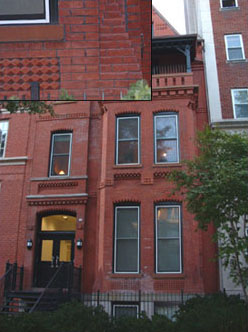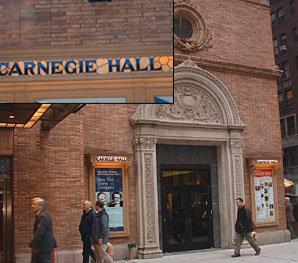How to Make 100-year Old Brick
By Masonry
 When it comes to renovation, many times owners are looking to take something old and make it new. However, when it comes to preservation of historic homes, the goal is oftentimes quite the opposite. For many historic homes, the brick ? sometimes even the brick plant ? isn't around to help make that restoration job a breeze. That's where Lynda Evans, president of Stone Art Inc. of Church Hill, Tenn., steps in to help make new brick that matches the color and texture of the old, and is acceptable for even the most demanding preservation job.
When it comes to renovation, many times owners are looking to take something old and make it new. However, when it comes to preservation of historic homes, the goal is oftentimes quite the opposite. For many historic homes, the brick ? sometimes even the brick plant ? isn't around to help make that restoration job a breeze. That's where Lynda Evans, president of Stone Art Inc. of Church Hill, Tenn., steps in to help make new brick that matches the color and texture of the old, and is acceptable for even the most demanding preservation job.
Stone Art has been assisting architects, preservationists and mason contractors for more than 16 years. Seeing a need for this rare service, Evans has received quite a bit of assistance from those in the industry.
"A lot of brick companies have been very generous in sharing information, including archives and firing recipes for discontinued brick," Evans said. "Of course, if the company is no longer in existence, then that doesn't help much."
"The Brick Industry Association is a wealth of knowledge as far as how to make 'errors' that were made in bygone ages," she continued. "A lot of the time, we're duplicating something that was a 'blooper.'"
To assist Evans in her sleuthing, she requires five brick samples from the building and a photograph of the structure. The five samples are used to give her a hands-on, close-up look at the color and texture of the brick. The photo helps to tell her the color distribution in the wall, if there is more than one color in the brick, variances in the brick sizes, and to give her an overall feel for the wall or building.
There are a lot of earth elements found in brick, so there's also some sleuthing involved in trying to discover the right recipe to make matching bricks.
 "I often start with the geographic location of the building we're matching," she said. "If it's old, then usually the brick didn't come from too far away due to transportation costs. So I'll often start with clay from brick plants that are in that area, and talk to people who make brick in that area and ask for their input."
"I often start with the geographic location of the building we're matching," she said. "If it's old, then usually the brick didn't come from too far away due to transportation costs. So I'll often start with clay from brick plants that are in that area, and talk to people who make brick in that area and ask for their input."
There are often some dead giveaways as to the material makeup of the brick simply by its appearance. If metal has exploded through the face of the brick, then there's a high iron content. Green staining often suggests that there's copper involved, and black coloring gives away manganese.
"If we can get an idea of what was used in the brick, then that's a starting place. If not, then we just go by color and find something that's similar in color and texture."
To match a brick, Evans first creates sample wafers to get a general idea for color and texture. Evans then completes a second test in a hot box that can produce a 15-hour firing sample in only 45 minutes; this helps to get the color, texture, firing times and heat correct. Stone Art then uses a larger sample kiln to produce 10-15 whole brick samples. At the end of this process, she will mix the sample bricks that she has created with the original samples to see if she can tell the difference.
"My goal is to not be able to pick out the originals," she said.
In all, it can take four to six weeks to create sample bricks for clients; depending on the quantity of brick, it typically takes eight to 12 weeks to complete the brick order for the project. For anyone looking to make a perfect match for a preservation project, though, it's worth the wait.
About the Author
Masonry, the official publication of the Mason Contractors Association of America, covers every aspect of the mason contractor profession - equipment and techniques, building codes and standards, business planning, promoting your business, legal issues and more. Read or subscribe to Masonry magazine at www.masonrymagazine.com.


















